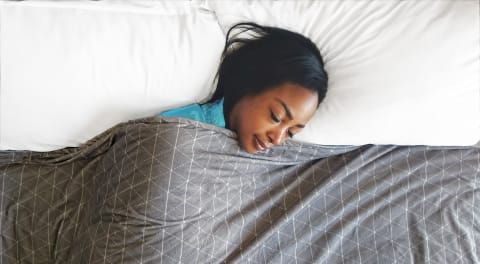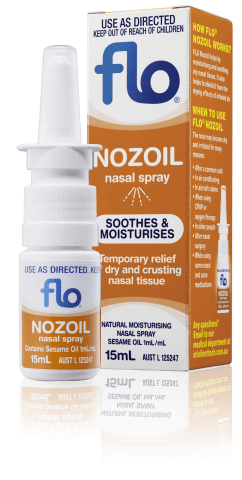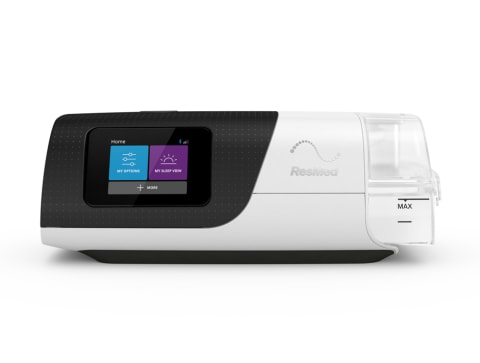Automatic CPAP Machines

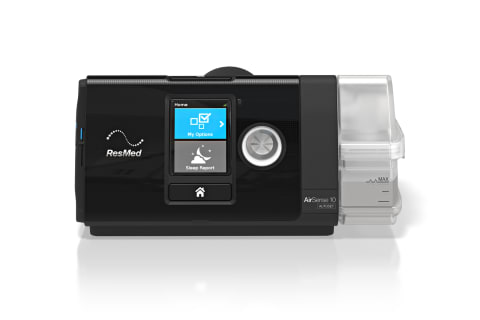 Further $50 Off with code "XMAS50"
Further $50 Off with code "XMAS50"
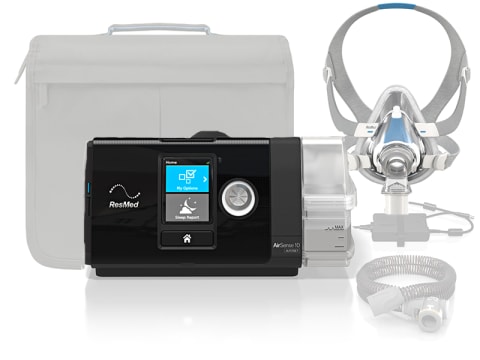 Further $50 Off with code "XMAS50"
Further $50 Off with code "XMAS50"
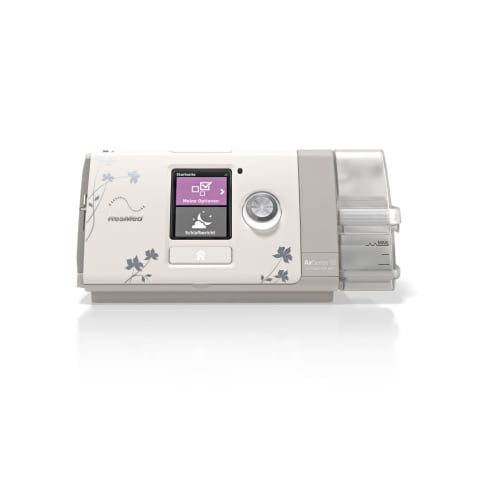 Further $50 Off with code "XMAS50"
Further $50 Off with code "XMAS50"
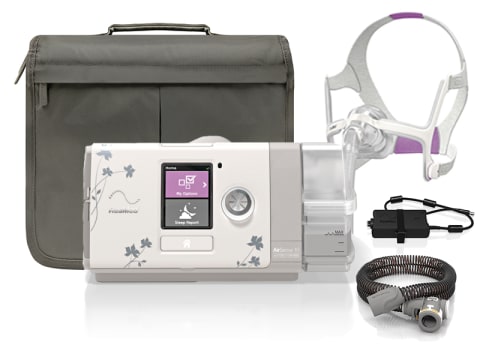 Further $50 Off with code "XMAS50"
Further $50 Off with code "XMAS50"

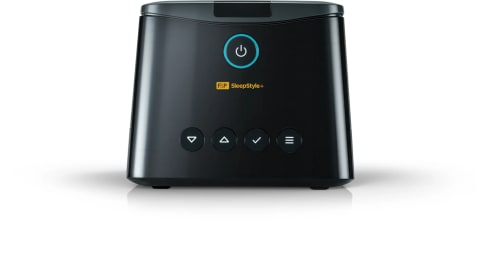
An Automatic CPAP, also known as an Auto CPAP or APAP (Automatic Positive Airway Pressure), is a type of CPAP machine that adapts to your breathing patterns in real time. Instead of delivering one fixed level of pressure all night, an Auto CPAP continuously monitors your airflow, detects early signs of airway narrowing, and adjusts the pressure up or down as needed. This means the machine provides only the pressure required to keep your airway open at any given moment, helping maintain effective therapy while maximising comfort.
This smart, responsive approach helps ensures effective treatment while enhancing comfort. For example, if your airway begins to collapse as you move into deeper sleep, roll onto your back, or develop nasal congestion, an Auto CPAP will gently increase pressure to prevent an apnoea event. When your airway is stable again, it lowers the pressure back to a more comfortable level.
Because of this adaptability, Auto CPAP therapy often feels more natural and less intrusive, especially for new CPAP users or those whose pressure needs vary during the night.
One of the biggest differences between Automatic CPAP and traditional fixed-pressure CPAP is how they deliver air pressure. A fixed CPAP is set to one prescribed pressure level, determined during a sleep study, and maintains that same pressure throughout the entire night. While this approach is effective, it doesn’t account for changes in your breathing such as when you shift positions, transition between sleep stages, or experience congestion. As a result, the prescribed pressure may feel too strong during some periods, even though it is necessary during others.
In contrast, an Automatic CPAP constantly evaluates your breathing and adjusts the pressure within a set range. It increases pressure when signs of airway collapse appear and reduces it when breathing becomes stable again. This results in a more adaptive and comfortable therapy experience, as the machine uses only the pressure you need, exactly when you need it.
Comfort is another key difference. Fixed CPAP therapy can feel forceful during lighter sleep or when you first lie down, which can make it harder for some users to fall asleep. An Auto CPAP helps address this by keeping the pressure lower during calm, stable breathing and raising it only when necessary. This gentler approach often reduces sensations like air swallowing, dryness, or the feeling of excessive airflow, contributing to a more comfortable and tolerable experience.
The two types of machines also differ in terms of who they’re best suited for. Fixed CPAP works well for people whose pressure needs are very stable. For example, those with consistent sleep habits, steady weight, and minimal congestion or positional changes. Automatic CPAP, however, is ideal for users whose needs vary throughout the night or over time. This includes people who change sleep positions regularly, experience seasonal allergies, have fluctuating weight, or consume alcohol, which can increase airway relaxation. Its adaptability also makes it a great choice for new CPAP users who are still determining what pressure works best for them.
Automatic CPAP machines offer greater versatility over the long term. While fixed CPAP machines require manual adjustments from a clinician if your needs change, Auto CPAP machines automatically adapt each night and can also be switched into fixed-pressure mode when needed. This flexibility means an Auto CPAP can effectively grow with you and your therapy requirements, reducing the need for repeated pressure adjustments or additional sleep studies.
Choosing an Automatic CPAP (Auto CPAP or APAP) offers a range of practical benefits that can significantly enhance comfort, treatment effectiveness, and long-term success compared to a fixed-pressure CPAP machine. The core feature of an Auto CPAP is its ability to monitor your breathing continuously throughout the night and adjust the pressure breath-by-breath. This ensures you receive the minimum effective pressure at any given moment, which creates a cascade of advantages that improve your overall therapy experience.
One of the biggest benefits of Auto CPAPs is better night-to-night comfort and tolerance. Because these machines lower the pressure when your airway is stable and only raise it when they detect snoring, flow limitations, or apnoeas, many users find their therapy gentler and easier to sleep with. Reduced unnecessary pressure often means fewer complaints of feeling “blown on,” less air swallowing (aerophagia), and fewer mask leaks caused by excessive pressure. This heightened comfort often translates directly into greater therapy consistency and adherence, which is crucial for achieving the desired health benefits.
Another major advantage of Auto CPAPs is that they provide personalised, breath-by-breath therapy. Sleep is a dynamic process: your pressure needs change depending on your sleep stage (such as REM versus non-REM), your body position (back, side, or stomach), nasal congestion, and even factors like alcohol or sedative use, changes in weight, or illness. An Auto CPAP automatically adapts to these changes each night, which means you’re more likely to be protected during every sleep cycle and across varying conditions without needing a new prescription every time something in your life shifts.
Because Auto CPAPs only deliver higher pressures when needed, the average pressure over the course of the night tends to be lower than the fixed pressure that covers your worst breathing moments. This often helps reduce common side effects like dryness, nasal irritation, and mask discomfort, making therapy easier to tolerate long-term.
For people new to CPAP therapy and who haven’t had a titration study to pinpoint exact pressure needs, Auto CPAPs are especially useful. They offer a safe, clinician-guided way to “find” the right pressure range, and many doctors start new patients on APAP for this reason. After reviewing the machine’s therapy data, clinicians can later confirm an optimal fixed pressure if necessary.
Auto CPAPs also reduce the need for repeat sleep studies or prescription adjustments. Because the machine self-adjusts within a clinician-set pressure range, lifestyle or seasonal changes such as weight fluctuations, allergies, or travel often don’t require immediate clinic visits or additional tests, as the device compensates automatically.
The increased comfort and adaptability of Auto CPAPs are strongly linked to improved adherence. Better adherence, meaning more nights used and longer hours per night, correlates with reduced daytime sleepiness and an overall improvement in quality of life.
If you travel frequently or sleep in different environments, Auto CPAPs offer practical benefits by responding to changes in altitude, cabin pressure during flights, temporary nasal congestion, or respiratory infections. Fixed-pressure devices require manual adjustments or repeat clinic visits for such variations, while Auto CPAPs adapt seamlessly to your temporary needs.
Modern Auto CPAP devices come packed with advanced algorithms that not only adjust your pressure but also track diagnostic data like usage hours, apnoea-hypopnoea index (AHI) estimates, and leak reports. This detailed data allows clinicians to fine-tune your treatment remotely, detect potential problems early, and provide evidence of effective therapy for insurance or workplace requirements.
In summary, an Automatic CPAP offers a flexible, personalised, and user-friendly approach to managing sleep apnoea. Its ability to adjust pressure dynamically according to your breathing patterns leads to greater comfort, improved adherence, reduced side effects, and often better therapy results. These features make it an excellent first choice for many people diagnosed with obstructive sleep apnoea and for those with changing pressure needs due to lifestyle or health factors. Always consult your sleep physician or CPAP consultant to determine whether an Auto CPAP is the most suitable option based on your individual condition and preferences.
While Auto CPAP (APAP) machines are highly versatile and increasingly popular because they automatically adjust pressure throughout the night, there are still clear situations where a fixed-pressure CPAP can be the better choice. Understanding these scenarios helps explain why your sleep physician may recommend one type of device over another, even if APAP sounds more “advanced”.
When pressure needs are stable and well established
If you’ve recently had an in-lab sleep study (polysomnography) or a thorough CPAP titration that shows one pressure reliably controls your obstructive sleep apnoea, a fixed CPAP can be ideal. In this situation, your airway obstruction responds well to a single set pressure, ongoing adjustments are not needed, and therapy tends to remain predictable and straightforward. Many people appreciate that a fixed CPAP delivers the same stable pressure all night, every night, with no noticeable fluctuations, which some find more comfortable and less distracting than the constantly adapting pressure of an Auto CPAP.
For certain complex or atypical breathing disorders
Although APAP machines work very well for most people with uncomplicated obstructive sleep apnoea, they are not suitable for every type of breathing disorder. A fixed CPAP may be preferred, or even replaced by more specialised devices, for people with conditions such as central sleep apnoea, Cheyne-Stokes respiration, treatment-emergent central apnoea, certain neuromuscular disorders, or hypoventilation syndromes. These conditions often involve problems with how the brain controls breathing, not just simple airway collapse, so standard APAP algorithms may not respond appropriately. In these cases, your doctor may prescribe fixed CPAP, BiPAP, ASV, or another advanced mode so that pressure delivery is carefully controlled and therapy remains stable and safe.
3. When clinicians want to validate or test a single therapeutic pressure
Sometimes, fixed CPAP is used as part of a structured treatment plan rather than as a long-term mode of therapy. Your sleep physician may choose a fixed-pressure device when they want to confirm that a specific pressure is effective, monitor how stable your respiratory events are over time, or assess therapy outcomes under consistent conditions. A fixed setting also makes it easier to troubleshoot issues such as residual snoring, mask leaks, or pressure intolerance because one variable, the pressure, remains constant. This “controlled environment” approach can simplify clinical decision-making and guide future adjustments or a later switch to APAP if appropriate.
4. Patient preference and comfort
Technology aside, personal comfort and confidence matter. Some people simply prefer the steady, unchanging feel of fixed-pressure therapy and like knowing exactly what pressure they are receiving every night. Others are sensitive to the sensation of pressure changes during sleep and find the gentle but noticeable shifts of APAP unsettling. A fixed CPAP may also have simpler menus and fewer adjustable settings, which some users appreciate if they want a “set and forget” device with minimal complexity.
Auto CPAPs offer flexibility and dynamic pressure support for a wide range of users, but fixed CPAPs still play an important role in specific clinical situations where stable pressure, clear medical guidelines, complex respiratory conditions, or particular testing needs are involved. In practice, your doctor may recommend a fixed device when your pressure needs are well known and stable, when you have a complex breathing pattern that requires tightly controlled therapy, or when they need consistent pressure to accurately interpret your response to treatment.
If you’re unsure which mode is best for you, the safest approach is to follow your sleep physician’s advice or speak with one of your CPAP consultants. They can review your sleep study, symptoms, lifestyle, and preferences, then recommend the device type that best matches your breathing patterns, comfort needs, and long-term health goals.
Yes, within the range your doctor prescribes. An Auto CPAP (APAP) is designed to automatically adjust your pressure within the range set by your doctor. The machine continuously evaluates your breathing throughout the night to determine where your pressure needs to sit.
Modern APAPs use sophisticated algorithms that detect signs of airway instability, such as snoring, flow limitation, increased respiratory effort, or partial airway collapse. When these signals appear, the APAP gently increases pressure to prevent an obstruction. When your airway stabilises, the machine gradually reduces pressure again to keep you as comfortable as possible. This dynamic adjustment is what makes APAP therapy so effective and comfortable for many users.
However, it’s important to understand that finding your pressure is not a one-time event. Your optimal pressure can vary night to night due to sleep position changes, weight fluctuations, nasal congestions, alcohol intake, or even how tired you are. APAPs adapt to these nightly variations, which is why many patients prefer them over fixed-pressure machines.
Your device records metrics such as your average pressure, peak pressure, leak levels, and residual apnoea-hypopnoea index (AHI). These insights allows your sleep physician and/or CPAP consultant to fine-tune your settings such as widening or narrowing the pressure range and adjusting your comfort settings.
An Auto CPAP (APAP) machine knows when to increase or decrease pressure by constantly “listening” to your breathing and responding to early signs that your airway is starting to narrow or collapse. Instead of delivering one fixed pressure all night, it uses sensitive flow sensors and built-in algorithms to adjust pressure breath by breath, so you get just enough support to keep your airway open, no more, no less.
As you sleep, the machine measures how smoothly air moves in and out of your lungs. When everything is stable and your airway is open, it gradually lowers the pressure toward the bottom of your prescribed range to maximise comfort. When it detects changes that suggest your airway is beginning to struggle, it gently increases the pressure to stop things progressing into full obstructions or long breathing pauses.
Flow limitations are very early warning signs that your upper airway is narrowing. The machine analyses the shape of your airflow curve, and when it sees the top of that curve starting to flatten instead of remaining smooth and rounded, it recognises that your airway is becoming restricted and nudges the pressure up in small steps to restore a normal pattern before a full blockage occurs.
Many APAP devices also have built-in microphones or vibration sensors that detect the subtle vibrations caused by snoring. Because snoring usually means the tissues in your throat are vibrating due to partial airway collapse, the machine treats this as a sign that more support is needed and raises the pressure to stabilise the airway and reduce or eliminate the snoring.
Hypopnoeas are partial blockages that reduce airflow, while apnoeas are full pauses in breathing, and both are key events the machine looks for when deciding how much to adjust pressure. When it detects a drop in airflow that meets the criteria for a hypopnoea, or a complete pause that indicates an apnoea, it responds more assertively by increasing pressure in larger or quicker steps always within your prescribed range to reopen the airway and restore normal breathing, before slowly reducing pressure again once your airflow has stabilised. This constant monitoring and fine-tuning all happens automatically in the background through the night, giving you therapy that adapts to changes in sleep stage, body position, and night-to-night variation, while keeping pressure as low and as comfortable as possible whenever your airway is stable.
Your pressure needs can shift dramatically throughout the night and one of the biggest advantages of an Auto CPAP (APAP) machine is its ability to adapt to these changes in real time. Two major factors that influence your required pressure are sleep position and sleep stage and both can have a significant impact on how your airway behaves while you sleep.
Many people require higher pressure when sleeping on their back. In this position, gravity naturally pulls the tongue and soft tissues backwards toward the throat, making the airway narrower and more prone to collapse. By contrast, sleeping on your side generally reduces this gravitational effect, meaning your airway stays more open and often requires less pressure to keep it stable. This is why people who frequently shift positions during the night may notice noticeable fluctuations in the pressure delivered by their APAP.
Sleep stages also play a key role. During REM (Rapid Eye Movement) sleep, the muscles that support the airway become unusually relaxed. This deep relaxation makes airway collapse more likely, causing many individuals to experience more apnoeas, snoring, or flow limitations during REM than in other sleep stages. As you move in and out of these stages, sometimes multiple times per hour, your pressure needs can rise and fall accordingly.
On top of these factors, your natural anatomy and muscle tone contribute to pressure variability. Some people have airways that narrow more easily due to factors like jaw structure, neck circumference, or soft tissue thickness. These variations aren’t always noticeable when you’re awake but become more obvious once your body fully relaxes during sleep.
Because an APAP continuously monitors your breathing, it can respond instantly to any of these changes. Whether you roll from your side onto your back, enter deep REM sleep, or experience temporary airway narrowing, the machine automatically adjusts the pressure to maintain a clear, stable airway. This ability to adapt in real time is one of the biggest reasons APAP therapy feels more natural and consistent, offering effective treatment even when your breathing patterns shift throughout the night.
Before you begin therapy, your doctor or CPAP consultant will program a minimum and maximum pressure range based on your sleep study results, symptom severity, and any specific clinical considerations such as how your apnoeas behaved in different sleep stages or body positions. These settings act as the “guardrails” for your APAP machine. It will always stay within this prescribed range and will never exceed it, even if your breathing changes dramatically throughout the night.
Within those boundaries, the APAP functions like a highly intelligent autopilot. It analyses your breathing in real time and delivers exactly the amount of pressure you need at each moment, never more than necessary and never less than required to keep your airway stable and open.
A well-set APAP range typically feels comfortable, natural and supportive. Most users can tell their pressure range is appropriate when breathing feels unobstructed, they’re sleeping more soundly, and daytime symptoms such as sleepiness, headaches, or morning grogginess, start to improve. If your machine frequently hits either the minimum or maximum limit, however, it may be a sign the range needs fine-tuning. For example, if the device is often maxing out at the upper limit, you may require a slightly higher maximum pressure or if it sits at the minimum for long periods but still detects events, the lower limit may need adjusting.
Your clinician can review nightly data from the device, including pressure graphs, AHI (apnoea–hypopnoea index), leak rates, and flow limitation patterns. These insights help determine whether the machine is working efficiently within the prescribed range or whether adjustments might improve comfort and effectiveness. An appropriately set APAP range is especially important for people whose pressure needs vary throughout the night such as those who switch between side-sleeping and back-sleeping, individuals whose apnoea becomes more severe in REM sleep, or users who move frequently during sleep. It also benefits those experiencing nightly fluctuations due to nasal congestion, allergies, alcohol consumption, or changes in weight over time.
Ultimately, your APAP range is considered correct when you’re sleeping comfortably, your AHI is well controlled, the machine isn’t constantly hitting its pressure limits, and you’re feeling the benefits of treatment during the day. If anything feels off such as difficulty exhaling, frequent awakenings, or persistent symptoms one of our Sove CPAP Consultants can swiftly review your data and refine the pressure range to optimise your therapy.
Yes, it is completely normal for an Auto CPAP (APAP) machine to feel different from night to night. In fact, this variability is a sign that the device is working exactly as intended. APAP machines continuously monitor your breathing and adjust pressure in real time, and because your breathing patterns naturally change from one night to the next, the machine’s behaviour will naturally change along with them.
One of the biggest reasons therapy may feel different is due to changes in sleep position. When you sleep on your back, gravity pulls the soft tissues of your throat backward, narrowing the airway and making airway collapse more likely. If you sleep on your side where airway collapse is less common, you may notice that the pressure remains lower and the therapy feels gentler.
Sleep stages also influence how an APAP machine behaves. During REM sleep, your throat and airway-supporting muscles become significantly more relaxed. Many people experience their worst apnoea events during this stage, which means the machine may raise the pressure during REM and then lower it again when you return to lighter stages of sleep.
Temporary factors like nasal congestion can also make your therapy feel different. Allergies, colds, sinus issues, or even dry air can change the way you breathe through your nose or mouth, prompting the machine to increase pressure to compensate for restricted airflow. Even small, short-term fluctuations in body weight can affect how easily your airway collapses, and the machine may respond with different pressures as a result.
Lifestyle factors also play a role. Alcohol and sedative medications relax the throat muscles, making airway obstruction more likely and requiring higher pressure. Stress, poor sleep quality, or irregular sleep patterns can change your depth and rhythm of breathing, which the APAP will detect and respond to.
The quality of your mask seal can also affect how therapy feels. If the mask doesn’t seal well due to facial movement, worn-out cushions, or incorrect sizing, the machine may increase pressure as it tries to maintain a stable airway. A consistent, good-quality seal helps the device operate more smoothly and prevents unnecessary pressure changes.
Overall, nightly variation is not something to worry about. It simply reflects how your body changes throughout sleep and shows that the APAP therapy is actively adapting to keep your airway open. As long as you feel rested and your therapy data looks stable, these differences from night to night are both expected and entirely normal.
Selecting the right Auto CPAP (APAP) machine can make a big difference to your comfort, therapy effectiveness, and long-term success. While APAP devices automatically adjust pressure as you sleep, your experience will still depend on factors like the pressure range set by your doctor, the comfort features included, and how well your mask fits. The points below expand on the key things to consider so you can feel confident and informed when choosing a machine that suits your needs, lifestyle, and clinical requirements.
Pressure Range Settings
Auto CPAPs operate within a prescribed pressure range, not at random. Your doctor sets both the minimum and maximum pressure based on your sleep study, airway anatomy, and breathing patterns.
A well-chosen minimum pressure helps the APAP respond quickly when your airway starts to narrow or close, so it can prevent apnoeas before they fully develop. The maximum pressure acts as an upper safety cap, preventing the machine from overshooting and causing unnecessary discomfort or waking you from sleep. If the range is set too wide, some people may feel like the pressure is “chasing” their breathing or changing too much through the night. If it’s too narrow, the machine may not be able to respond properly to position-related or REM-related events when you need higher pressure. A thoughtfully tuned pressure range is one of the strongest predictors of both comfort and long-term therapy success, which is why it should always be set and reviewed by a sleep professional.
Comfort Features That Improve Tolerance
Modern APAP machines come with several comfort features designed to make therapy feel more natural and less intrusive.
Ramp settings allow the machine to start at a lower pressure and gradually increase to your prescribed range over a set period, helping you relax and drift off to sleep more easily. Expiratory pressure relief (often called EPR, pressure relief, or comfort) reduces the pressure slightly when you breathe out, so exhalation feels more like normal breathing and less like “pushing against” air. Humidification is another major comfort feature; integrated heated humidifiers and heated tubing help prevent dryness, congestion, nosebleeds, sore throat, and “rainout” (condensation in the tubing), especially in cooler or air-conditioned environments. These settings do not reduce the medical effectiveness of your treatment when set correctly, but they can dramatically improve comfort, reduce side effects, and support better adherence over time.
Mask Choice Is Just as Important as the Machine
Even the smartest APAP algorithm cannot fully compensate for an ill-fitting or uncomfortable mask. Mask leaks can cause repeated sleep disruptions, noisy airflow, dry eyes, and eye irritation, and they can confuse the device’s sensors, leading to inaccurate pressure adjustments or reduced therapy effectiveness.
Choosing the right mask type, whether it’s nasal pillows, a nasal cradle mask, a traditional nasal mask, or a full-face mask, depends on how you breathe (nose, mouth, or both), and your facial anatomy.
Data Tracking and Follow-Up Care
One of the biggest advantages of APAP therapy is access to detailed data about your sleep and breathing. Choosing a machine with clear, easy-to-read data displays or secure app connectivity allows you and your care team to track important information.
This can include leak rates, your nightly apnoea–hypopnoea index (AHI), residual events, and usage hours, which are often needed for insurance or compliance requirements. Over time, these data help identify whether your pressure range needs adjusting, whether mask leaks are affecting therapy, or whether other issues might be present. Regular follow-up with your CPAP provider or Sleep and Respiratory Physician ensures your settings are optimised as your body, health, and sleep patterns change.
5. Noise Levels and Portability
Most newer APAP machines are quiet, but if you or your bed partner are light sleepers, even small differences in noise can matter. It can be helpful to compare decibel ratings and the ‘quality’ of the airflow sound. Some people prefer a soft, steady hum over higher pitched airflow noise. For frequent travellers, portability becomes a major factor. You may want to consider compact or travel APAP models, compatibility with travel batteries or portable power banks, and features that help with flying, such as being approved for inflight use or handling cabin pressure changes. A good travel case and robust design are also important if you plan to take your device on holidays, business trips, or through environments where power supply may be less reliable.
Choosing an APAP machine is about more than picking the newest or most advanced model on the shelf. It’s about matching the pressure settings, comfort features, mask setup, data options, and portability to your personal needs and medical requirements. Working closely with your sleep clinic or CPAP consultant will help you make a confident, informed choice that supports long-term comfort, strong treatment adherence, and better overall sleep health.
Yes, for most people. APAP (Auto CPAP) devices are regulated medical equipment designed with multiple built-in safeguards to ensure they operate effectively within the pressure limits prescribed by your doctor. Modern APAPs use advanced algorithms that constantly monitor your airflow, breathing patterns, and any signs of airway obstruction. They adjust pressure gradually and only within a clinician-approved range, ensuring you never receive more pressure than is medically appropriate.
One of the key safety advantages of APAP is that it doesn’t deliver high pressure unless your breathing indicates it’s needed. If your airway is stable, the machine actually reduces pressure to the lowest effective level. This makes therapy both safe and more comfortable, especially for new users who may be sensitive to higher pressures.
APAP devices include several important protective features designed to keep you safe throughout your treatment.
Pressure limits and caps work by having your doctor set a safe lower and upper pressure limit before you begin therapy. This prevents accidental over-pressurisation and ensures the machine can only deliver air within a range that's been determined to be appropriate for your specific condition. Think of it like having guardrails on a road where the device simply cannot go beyond these boundaries, no matter what your breathing patterns suggest.
Leak monitoring is another critical safety feature. If your mask leaks excessively, the machine compensates by adjusting pressure and many devices will alert you or log this data for follow-up with your healthcare provider. This is important because excessive leaks can reduce treatment effectiveness, so having automatic detection helps ensure you're actually receiving the therapy you need.
Failure safeguards mean that most machines will automatically shut down or produce alerts if internal components malfunction. This protects you from receiving therapy from a faulty machine and alerts you to seek maintenance or repair before any issues arise.
Safety-tested materials used in APAP devices including cushions, tubing, and humidifiers are made from biocompatible materials specifically designed for nightly, long-term use. These materials have undergone rigorous testing to ensure they won't cause allergic reactions, skin irritation, or other adverse effects from prolonged contact with your face and airways.
However, there are certain clinical situations where APAP should be approached with more caution or avoided unless a specialist is involved. People with complex breathing disorders such as central sleep apnoea, Cheyne-Stokes respiration, hypoventilation syndromes, or specific cardiac or neurological conditions may require a more specialised device. In these cases, APAP algorithms may not respond appropriately because these disorders involve neurological or central control issues rather than simple airway collapse. Instead, a fixed-pressure CPAP, BiPAP, or servo-ventilation device may be recommended by your specialist. This is why it's essential to undergo proper clinical assessment before starting therapy. Your sleep specialist needs to understand the specific type of sleep-disordered breathing you have to ensure you receive the most appropriate and safe treatment option.
Always speak to a doctor to determine whether APAP is suitable for your type of sleep-disordered breathing and ask for help to configure a safe, effective pressure range tailored to your individual needs. During this process, your doctor will consider factors such as the severity of your condition, your overall health, any other medical conditions you may have, and your personal preferences regarding comfort and ease of use.
Proper setup also includes ensuring you understand how to use your device correctly, how to troubleshoot common issues, and when to seek help if you're experiencing problems. Regular follow-up appointments allow your healthcare provider to review your therapy data, address any concerns, and make adjustments if needed as your condition changes over time.
In summary, Auto CPAP is a clinically proven, safe therapy option for most individuals with obstructive sleep apnoea. If it is prescribed and set up under proper clinical guidance, it provides effective treatment with built-in safeguards to protect your comfort and health. If you have questions about whether APAP is right for you, or if you're concerned about any aspect of your therapy, speak with your sleep specialist or CPAP consultant. They can address your concerns, answer your questions, and ensure you're receiving the safest and most effective treatment possible.
No, Auto CPAP (APAP) machines do not require more maintenance than standard fixed-pressure CPAP devices. Both types of machines share the same fundamental components, such as filters, humidifiers, tubing, and masks, and therefore follow identical cleaning and replacement routines. If you know how to maintain a CPAP, you already know how to maintain an APAP.
However, because APAP machines often include more advanced software and sensitive flow sensors, maintaining them properly helps ensure the algorithm remains responsive and accurate. Here’s what good, routine maintenance looks like:
Daily and Weekly Cleaning
APAPs follow the same cleaning schedule as regular CPAP machines:
Mask cushions: Wipe daily (or after each use) to prevent oil build-up that can cause leaks.
Tubing: Wash weekly with warm, soapy water and allow to air-dry completely.
Humidifier chamber: Empty unused water each morning, rinse, and wash thoroughly once or twice per week to prevent mineral build-up and bacterial growth.
Keeping these components clean ensures consistent airflow and reduces the risk of irritation, leaks, or unnecessary pressure adjustments.
Filter Replacement
All CPAP machines, including auto and fixed, require routine filter replacements.
Disposable filters: Every 1–3 months, depending on your environment.
Reusable filters (if applicable): Rinse monthly and replace every 6 months.
Clean, unobstructed filters help protect the motor and maintain accurate pressure delivery.
Machine Care and Annual Servicing
Most manufacturers recommend:
- General inspection or servicing once a year, especially if the device is used nightly.
- Ensuring the machine is kept in a clean, dry area, away from dust, smoke, or direct sunlight.
- Checking for unusual noises, changes in airflow, or error messages, and contacting your provider if anything seems off.
Auto CPAPs do not require additional maintenance beyond what is already recommended for standard CPAP devices. Keeping the device clean, replacing filters regularly, inspecting consumable parts, and following manufacturer guidelines will keep your APAP working safely, accurately, and quietly for years.




